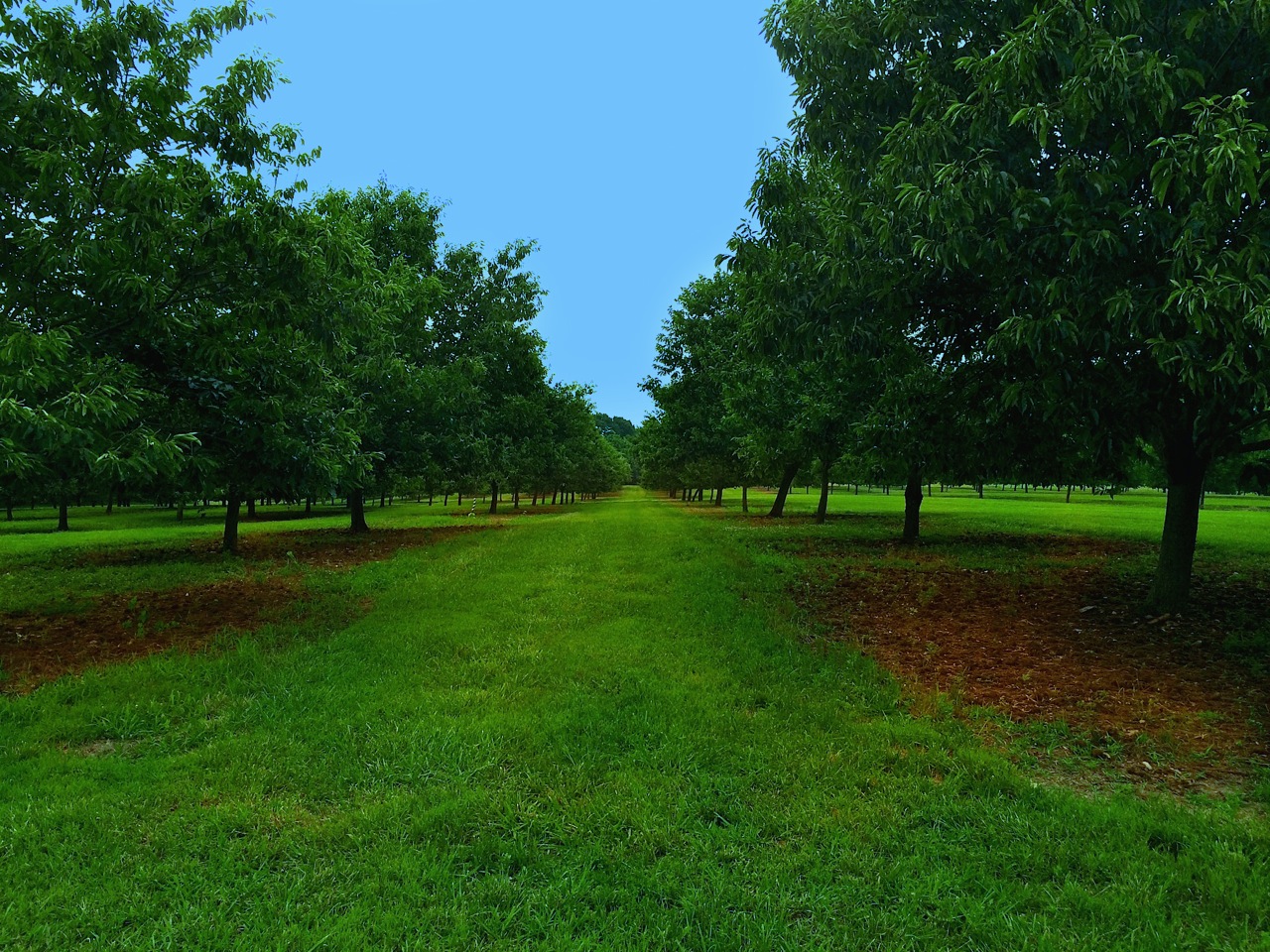In June I attended my first-ever Chestnut Growers of America annual convention. This year it was hosted by Richard Teague of High Rock Farm in Gibsonville, North Carolina. Richard has a gorgeous operation where he has 500, 13-year-old chestnut trees that produced 20,000 pounds last year. His orchard is what we aspire to be one day when we grow up. We’ll actually be cousins of sorts, as we’ve planted some of the same trees and both have Piedmont soil.
I was in deep chestnut-nerd-joy the whole weekend. For the past year I’ve been reading everything I could to learn about what to do and how to do it. As I’ve read articles, blogs, university websites, books and doctoral dissertations (seriously), I kept seeing some of the same names: Greg Miller of the Empire Chestnut Company; Dennis Fulbright—preeminent chestnut academician in the United States; David English, the largest grower in Florida; and Roger Blackwell, president of Chestnut Growers, Inc. And here I found all four of them sitting at one table. Guess where I chose to sit?
The weekend featured a mix of mealtime socialization, talks from professors and growers, workshops and even a visit from D.C. by a rep from the USDA. By listening (and asking way too many questions), I came away encouraged that this agribusiness can work well in Alabama. We are on the right path. Specifically, I was encouraged for the following reasons:
Price Confirmation. Seeing chestnut prices online, I felt like I had a good read of what retail is doing. But wholesale pricing and the identity of those buyers was a mystery to me. I found out during the convention that last year the Florida Chestnut co-op paid $2.65 per lb and the Michigan Chestnut co-op paid $2.15. Both would happily buy our chestnuts, and we can make a good profit at those prices. Retail achieves $5-7 lb—not bad.
Age. I was 15 to 20 years younger than most of the chestnut growers. They made comments about not seeing certain things in their lifetimes. I also heard a couple of folks say, “if I was younger, I’d plant 50 acres of chestnuts (a really big operation) and retire on that.” OR, “I wish I had more time to plant a bunch more trees.” Lord willing, I have time to do and see these things.
Second Wave. It seems there was a big push 15-20 years ago to try to grow this crop commercially. Some of the growing methods have proven to be flawed. For example, they all thought planting chestnut trees on 20-foot centers was the way to go. Now, they’ve found that was too tight. As the tree canopy grows together, the growers are forced to either accept a steadily declining yield each year, cut out every other tree (most are loathe to remove trees) or aggressively prune (a short-term band aid). Based on that, we planted our trees on 35-foot centers; sometimes it is better to be second generation.
Climate. Most of the folks attending the convention—and most chestnut growers—are clustered in one of five states: Ohio, Missouri, Iowa, Michigan or Florida (leaving California out of this). The Northerners were amazed at the size and the health of the 13-year-old trees grown in the North Carolina climate. One Michigander said, “Well of course it easy to grow these trees down here. We have to do everything right to succeed up north.” The Floridians had a similar, but muted, reaction. It seems these trees need a certain number of sub-45-degree hours to thrive. Some parts of Florida don’t have that. Alabama couldn’t be a better place on the map to grow chestnut trees! We need to get more people involved.
Post-Harvest. I’ve now seen the process—in person—that takes chestnuts from the field, into a hot water bath, to a sanitation dip, to the quality control belt, from a nut sorter into 50-lb bags, and finally, into a humidity-controlled cooler. I am glad I’ve got more time to watch this again and visit harvesting in person to build our own system.


Marketing. Based on the infancy of the industry, there are so many ways to exploit marketing methods and retail channels that haven’t even been tried yet.
Bottom-line, I came home from the Chestnut Growers of America convention super fired-up about what we are doing. Our next step is to figure out where we’ll be ordering 1,000 more chestnut trees to plant in the fall. If anyone has an extra shovel and strong back, you’re welcome to help!










google plus app for ipad
Thank you for sharing your info. I really appreciate
your efforts and I will be waiting for your next write ups thanks once
again.